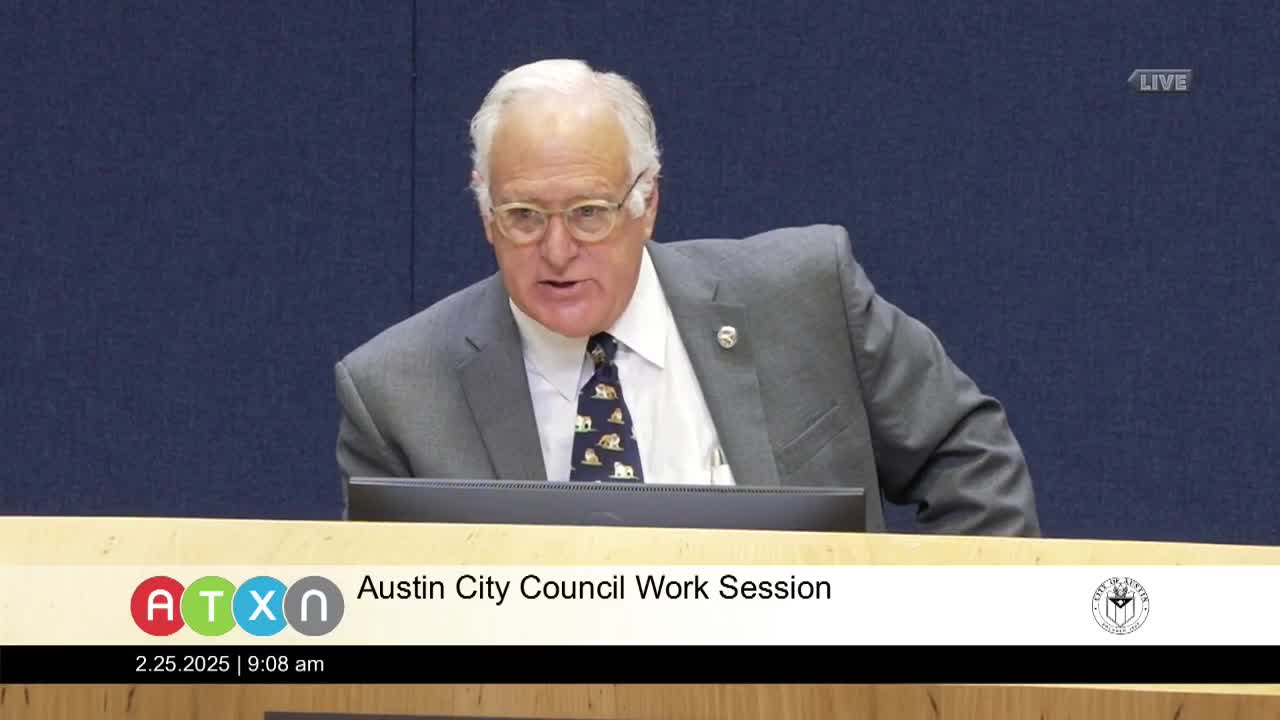Austin unveils ambitious design for world's first net zero carbon convention center
February 25, 2025 | Austin, Travis County, Texas
This article was created by AI summarizing key points discussed. AI makes mistakes, so for full details and context, please refer to the video of the full meeting. Please report any errors so we can fix them. Report an error »

In a pivotal meeting on February 25, 2025, the Austin City Council reviewed the ambitious design plans for the expansion of the Austin Convention Center, marking a significant milestone in the city’s decade-long journey toward enhancing its convention capabilities. The presentation, led by Tricia Tetreault, director of the Austin Convention Center department, emphasized the project’s transformative vision, which aims to reflect the community's identity while setting a new standard for convention spaces.
The proposed expansion will elevate the convention center from the 61st to the 35th largest in the United States, allowing Austin to compete more effectively with major cities like Seattle and Philadelphia. The new facility will increase rentable space from 365,000 to 620,000 square feet, with plans for future growth. This expansion is expected to bolster the local hospitality and tourism sectors by enabling the city to host larger and simultaneous events.
A key highlight of the project is its commitment to sustainability. The new convention center is set to become the first net-zero carbon convention center in the world, aligning with Austin's reputation as a leader in environmental initiatives. The design incorporates innovative features such as mass timber roof structures and low-carbon concrete, which not only reduce the carbon footprint but also enhance the building's aesthetic appeal. The project aims for high LEED certification, reflecting the city’s dedication to sustainable development.
The design also focuses on integrating the convention center into the evolving downtown landscape, connecting it with nearby cultural and entertainment districts. This strategic positioning is intended to create a cohesive urban environment, enhancing accessibility and fostering community engagement.
As construction is slated to begin in April 2025, with a projected completion date in time for the spring festival season of 2029, the council's discussions underscored the importance of this project for Austin's future as a premier destination for conventions and events. The funding for the $1.26 billion project will come from hotel occupancy taxes and convention center revenues, ensuring that the expansion is financially sustainable.
In conclusion, the Austin Convention Center expansion represents a significant investment in the city’s infrastructure, poised to enhance its economic landscape while prioritizing sustainability and community identity. As the project progresses, it will be crucial for city officials to maintain transparency and engage with the community to ensure that the new facility meets the needs and expectations of all Austinites.
The proposed expansion will elevate the convention center from the 61st to the 35th largest in the United States, allowing Austin to compete more effectively with major cities like Seattle and Philadelphia. The new facility will increase rentable space from 365,000 to 620,000 square feet, with plans for future growth. This expansion is expected to bolster the local hospitality and tourism sectors by enabling the city to host larger and simultaneous events.
A key highlight of the project is its commitment to sustainability. The new convention center is set to become the first net-zero carbon convention center in the world, aligning with Austin's reputation as a leader in environmental initiatives. The design incorporates innovative features such as mass timber roof structures and low-carbon concrete, which not only reduce the carbon footprint but also enhance the building's aesthetic appeal. The project aims for high LEED certification, reflecting the city’s dedication to sustainable development.
The design also focuses on integrating the convention center into the evolving downtown landscape, connecting it with nearby cultural and entertainment districts. This strategic positioning is intended to create a cohesive urban environment, enhancing accessibility and fostering community engagement.
As construction is slated to begin in April 2025, with a projected completion date in time for the spring festival season of 2029, the council's discussions underscored the importance of this project for Austin's future as a premier destination for conventions and events. The funding for the $1.26 billion project will come from hotel occupancy taxes and convention center revenues, ensuring that the expansion is financially sustainable.
In conclusion, the Austin Convention Center expansion represents a significant investment in the city’s infrastructure, poised to enhance its economic landscape while prioritizing sustainability and community identity. As the project progresses, it will be crucial for city officials to maintain transparency and engage with the community to ensure that the new facility meets the needs and expectations of all Austinites.
View full meeting
This article is based on a recent meeting—watch the full video and explore the complete transcript for deeper insights into the discussion.
View full meeting
